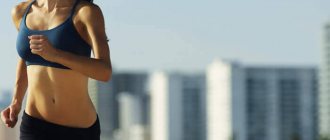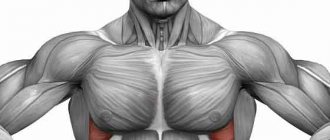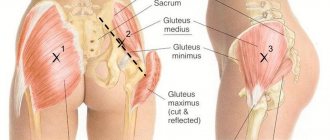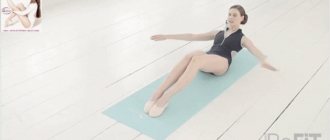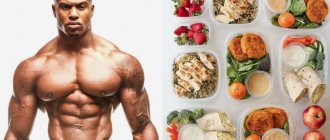I appeal to half of you.
I'm betting that at least half of you reading this regularly skip leg workouts or neglect to train each muscle group with equal frequency and intensity.
I see too many people at the gym over-emphasizing their most visible muscles while ignoring other parts of their body.
It's no coincidence that there is almost always a line of people waiting for a bench press while the leg press machine sits empty.
I have found that there are three main reasons why people neglect certain muscle groups:
- The desire to build the most visible muscles to look good in a T-shirt - the front side.
- Mainly working the muscles, they enjoy the workout and avoid uncomfortable workouts.
- It is believed that smaller muscle groups will receive sufficient growth stimulation by training larger muscle groups.
You know what... squats are a heavy exercise not meant to be comfortable, but it is necessary to go through some discomfort in order to build a full, muscular body.
If you are only motivated by curling dumbbells, then you will never achieve a bodybuilder's body, or a muscular Spartan-type body.
Your goal should be a complete package of exercises that affects the muscles from head to toe. Otherwise, you may end up looking like a piece of meat with chicken legs.
From front to back
When you look in the mirror you see the front of your body reflected back at you. You can, of course, look back and see what you look like from behind, but craning your neck to look over your shoulder doesn't have the same effect as seeing yourself thin from the front.
The problem is that - this problem is compounded by the wall of mirrors that often interfere with the placement of free weights in the gym. It's much easier to focus on muscles you can see than those you can't.
Too many people think that that front silhouette is how the rest of the world sees them, but that's only a small percentage. People look at your body from different angles in everyday life.
This is where the problem of neglected muscle groups begins.
For example, the triceps are ignored in favor of the biceps, and the back muscles are forgotten when you work on the pecs or large shoulders. Legs, calves and forearms are not taken into account.
What exercises are suitable?
As I said above, weight training or bodyweight exercises will help you lose weight and tone your legs, but at the same time your muscles will become quite a bit larger .
If you only need exercises to make your legs lose weight and not get pumped up, then the best solution for you is cardio exercise .
Brisk walking
is ideal .
The muscles here tense a little more than in the everyday life of the average active person.
Running is also suitable , but here the load on the legs will be greater , so the muscles can react and transform a little.
Jumping rope is also a good option, but calves work well here. If calves are your problem area and you want them to be thin and graceful, then read the article about calves.
Swimming is also suitable, here the legs are weakly activated, but the muscles of the back, arms and chest work.
The bike isn't quite right for you. The quadriceps are very involved here, especially if you go uphill. Therefore, we discard this option immediately.
Various steppers are similar to a bicycle; the quadriceps are also strongly involved.
Do you want to lose weight in your legs without exercise at all? This is for you.
I think you will also be interested in the article about losing weight in your thighs.
Don't be an internet meme
You've probably seen them - bad photos of guys whose muscles are all disproportionately skinny below the waist. These online memes have captions such as “every day is arm day,” “maybe they won't notice my legs,” and “upper body every day.”
The message is clear: Focus only on your upper body—or worse, just your arms...or worse, just your biceps—and you'll end up looking like a meathead with chicken legs.
Don't be “that guy.” Don't be the subject of online and real-life ridicule.
Likewise, imagine what you might look like with big biceps and flabby triceps. Consider the locker room jokes that could be made about dwarf forearms and thin calves.
Imagine being looked at from the front, your pecs bulging, your arms radiating power... and then you turn around, the illusion shattered by one look at your flat back and questionable buttocks.
You may have been told to “focus on your strengths, not your weaknesses.” Well, that's good advice if you're considering what career to choose, but applying the same principle to weight lifting will end up turning you into a walking meme.
Of course, play well to your strengths - but put equal or greater effort into correcting your weaknesses to build a well-balanced body that looks great from every angle.
A well-balanced training program and isolation exercises make a difference!
Appearance matters, but there's something more important
So far, we've talked about the detrimental effects that unbalanced muscle development can have on your appearance. This is of course an important consideration, affecting both your self-confidence and how others perceive you, but it is not the only issue.
From a purely functional perspective, muscle imbalances can increase the risk of injury.
Let's talk about antagonism...
Defined as either “active hostility or opposition” or “inhibition or interference with the action of one substance or organism by another,” antagonism is about working against something, but in our case that’s exactly what we need.
Let's look at an example - a strong chest and a weak back. Not only is such an imbalance aesthetically unpleasant, it represents a lack of desired “muscular antagonism.”
If the upper back has been developed sufficiently, it will exert the opposite effect, or “counteract”, against the chest and surrounding muscles, preventing the shoulders from slumping forward. Without a strong upper back, you are at greater risk of back injury or shoulder injury/pain due to inevitably poor form, posture and muscle weakness.
Now imagine that you are training your legs. You've warmed up, maybe done a few calf raises on the calf machine. It's time for quads! Hell, you're absolutely tearing your quads apart with lunges, leg stretches, and squats. New personal record!
But you are already tired. You do some sloppy deadlifts, add some light weight to the machine for a quick hip approach, and call it a workout.
Repeat this pattern week after week and you'll end up with big hips, small, floppy hamstrings and quite possibly poor posture, knee pain and an increased risk of ACL injury.
Insufficient muscle antagonism—an unequal balance of opposing forces—doesn't just make you look bad—it can make you look painfully bad.
Next time you're at the gym, don't just work the muscles you can see in the mirror or enjoy a workout - look at your body as a whole and give each part the attention it needs.
What are the most commonly forgotten muscles?
- (Legs) Quadriceps and Hamstrings
- Caviar
- Forearms
- ... And very lazy people don’t even train their back muscles
Now, if you follow a good workout program consistently and completely, then you should not be missing any muscle groups.
Leg workout
If you've chosen a workout program that calls for leg day, and you simply skip that part of the work, then you have a motivation problem.
There is a simple solution to ensuring that your legs develop in proportion to every other muscle group on your body - train them !
Half training your legs or putting it off... "let's save the legs until next week" will make you look like a piece of meat with chicken legs in no time.
Take leg day just as seriously as breast day.
Best leg exercises:
- Squats
- Leg press
- Leg extension
- Hamstring flexion
How to train to make your legs thicker?
First, understand that it will be very difficult. Leg workouts are usually the killer ones. If you do not have the health restrictions that I wrote about above, then sit back and write down.
The base is the basis of the basics, only heavy basic exercises will most effectively affect muscle growth.
There are a lot of different exercises and options for doing them. But the most important thing is the correct technique.
You don’t have to strive for weight at the expense of technique; first of all, you have to feel the working muscle group.
If you do the exercise incorrectly, you risk not only wasting time and being left with thin legs, but also getting injured. There is also no need to stagnate on one weight for months.
As I said before, give priority to the basic movements:
- squat;
- deadlift;
- lunges;
- leg press.
You can also add some isolation exercises to squeeze every last drop out of your branches.
It can be:
- extension;
- flexion;
- intelligence.
You can also do leg raises in the machine if you want a butt like a nut. I like it better here.
Be a man - avoid exercise equipment. Only free weight, only hardcore. This will use more muscles.
For example, you can squat with a barbell on your shoulders, or in a Smith machine. But Smith won't give you the same sensations that a barbell will, so leave it to the girls.
If you want to gain muscle mass, then it is better to avoid supersets , dropsets and other gimmicks. At the initial stage they are of no use.
The number of repetitions can be completely different; it is better to find it experimentally. For some, 20 repetitions work, for some, five are enough. You can also cycle the load to give your muscles stress and thereby push them to grow.
The best way to get bigger calves
Calves are one of those muscle groups where genetics plays a major role in their size and muscularity. I fall into the lucky category of having well-developed calves without having to devote much attention to training them.
I have a similar build to my gym partner, but my calves are naturally 5cm larger in diameter than his.
Most people are genetically medium-sized, small calf muscles that need to be properly developed.
However, calves are viewed as second-class muscles, discarded as an afterthought after a grueling leg workout. But your calf muscles are the pillars on which your body stands and should not be ignored.
They will be visible to everyone in your summer shorts and should be worked with the same intensity, focus and consistency as any other muscle group you want to build.
Nothing says “lazy amateur” more than a well-developed upper body resting on pencil-sized legs.
Typically, people train their calves at the very end of a leg workout, right after heavy barbell squats, leg presses, and lunges. Training your legs can be a very resource-intensive activity and doesn't leave you with much energy, which is often the reason why your calves aren't getting enough exercise.
If this is what you are struggling with and the main reason why your calves remain underdeveloped and not getting the attention they need, then try this; train your calves at the beginning of your upper body workout or with upper body muscle groups such as the chest and back, biceps and triceps.
Start with your calves as the first exercise in your workout. For example, calves, chest, biceps, or calves, chest and back... you get the idea.
This will allow you to train your calves to the fullest with a full tank of energy. This will allow you to focus on stimulating muscle growth without it burning up all your energy for the rest of your workout. Basically, this will be a good warm-up before you train your upper body muscles.
Reasons for very thin legs in guys
There can be many reasons for thin legs in men, and this is not always the fault of the owner of the legs .
Here is a list of the most common reasons for thin legs in guys:
- Features of genetics.
- Incorrectly selected training program.
- Problems with the spine or knees.
- Problems with the head or “I’m already powerful, but I can’t see my legs in my pants.”
If you're skinny all over and not just your legs, read my article about weight gain for skinny guys.
Genetics
Often thin legs are inherited by . And in this case, pumping them up is oh so difficult.
But difficult does not mean impossible. You will have to work harder in the gym than those who are a little luckier with their legs. If you don’t whine and don’t give up, then everything will work out.
Inappropriate training program
An important factor in growing your legs wider is your training program.
We have two types of muscle fibers, and each of them needs to be trained differently .
One type responds to high-repetition training with light weights, while the other responds to strength training with heavy weights and a small number of repetitions.
The predominance of one type over another in various muscles depends on genetics.
If you train with heavy weights and do 4-10 repetitions, but your legs are still thin and not growing, then try to reduce the weight and start doing sets of 12-20 repetitions.
If you trained in a high-repetition mode, then do the opposite .
Health problems
If you have problems with the spine, you can pump up your legs, but you should do it carefully. In this case, a standard training program will not work.
You will have to completely eliminate the axial load on the spine. You will do the exercises sitting or lying down. I'll have to give up squats.
The “leg press” will be your magic wand in the world of iron and your guide to big legs. You can perform any of its variations; both horizontal and vertical simulators are suitable.
Focus on your lower back and pelvis . Under no circumstances should they come off the back of the machine ; this can lead to injury to even a healthy spine.
Then you can perform isolating exercises, for example, bending and extending your legs in exercise machines.
With knee problems, everything is much more complicated. Putting any stress on your knees without a doctor's permission is extremely dangerous. First you need to heal your injuries (if possible), and then gradually begin training your legs.
Male without legs - my favorite
And finally, the highlight of the program - a kind of centaur, with the torso of a jock and the legs of a chicken .
These people have their own philosophy. They don't need to pump up their skinny legs because they can't be seen in their pants. By pressing the clutch pedal of your grandfather's Muscovite, you can pump up more massive legs than those of these guys. What’s interesting is that they are not ashamed of their thin legs.
What advice can you give here? Stop pounding your biceps and abs every day. If you're hoping to get washboard-shaped abs for girls to wash their wet panties on, then I have bad news for you. The only thing that will make their eyes wet is when they see your skinny legs.
Seated or standing leg exercises
Some people have naturally large calves, while others struggle to add even a couple of centimeters. There is a debate that debates which exercises are best for developing calves - sitting or standing. Before we get into this topic, we need to understand a little about the anatomy of the calf muscles.
The calves are actually called the "triceps surae" muscle and are made up of three main muscle heads:
- Medial gastrocnemius, makes up the upper inner part of the calf
- Lateral gastrocnemius muscle, makes up the upper outer part of the calf
- Soleus muscle, located behind the gastrocnemius muscle
The gastrocnemius medialis and lateral muscles are the largest of the three and make up the bulk of the lower leg. The soleus is a small muscle that is barely noticeable, located under the main gastrocnemius muscles.
Here's the biggest mistake people make when training their calves... they do most of their calf exercises while sitting.
Why are you asking about this error?
Because the main part of the lower leg, the medial and lateral gastrocnemius muscles are activated to a sufficient extent only when the leg is straight. When you are in a sitting position, your leg is bent at the knee to 90 degrees. This relaxes the large gastrocnemius muscles of the calf and isolates the small soleus muscles.
This is not an ideal situation if you are trying to build up your calves.
Most calf exercises should be standing, like the donkey calf raise, which is a great exercise because it works the entire calf muscle group, especially isolating the calf muscles, allowing for maximum calf development.
Conclusions:
- Seated calf exercises emphasize the soleus muscles
- Standing calf exercises emphasize the large calf muscles
Exercises to Build Big Forearms
The forearms are made up of many interconnected muscles. Some bodybuilders have a habit of deliberately neglecting their forearms in a way that emphasizes the muscularity of their biceps.
This is not the tactic used today. Just marvel at the development of the forearms of Phil Heath, Lee Priest and Frank McGrath and you will see how much attention is paid to forearm growth. Bodybuilders more than ever need to focus on their forearms to have any chance of winning the show, and the average build needs a set of pretty muscular forearms to avoid looking thin and weak.
The brachioradialis muscle is one of the main muscles of the forearm and plays a supporting role in the movement of the biceps. This particular muscle makes up most of the thickness of the arm. Usually people train the upper arm and completely neglect this muscle. But if you really want impressive arms, then you must train this muscle in harmony with your upper body.
Having large, muscular biceps and triceps and thin, weak forearms will look less impressive. I mean, it would be like having a well-toned upper body standing on skinny legs. Is not cool.
Here are three great exercises you could add to your arm workouts to strengthen your forearms.
Hammers
This is an isolation exercise that primarily targets the brachioradialis muscle and to a lesser extent the biceps. It can be performed using dumbbells or a rope in a machine.
This exercise is performed using a neutral grip (thumbs pointing up), which places the shoulder muscles in a straighter line of pull, increasing shoulder engagement and development.
Reverse Curls
This is an isolation exercise that targets the brachioradialis muscle, and to a lesser extent the biceps.
Performing crunches with a reverse grip (palms facing down) with an EZ bar. This means that the biceps lose their mechanical advantage by transmitting a strong line of pull to the forearm muscle.
When the crunch is performed with a pronated grip, the brachioradialis muscle does most of the work. Because the brachioradialis minor does most of the work, you don't need to use a lot of weight in this exercise.
Barbell curls with hands
This is a good exercise that targets the muscles on the inside of the forearm, namely the palmaris longus and flexor carpi radialis.
Kneel in front of a flat bench, grab a straight barbell and rest your forearms on the bench with your arms hanging over the edge. Now curl your wrist and bar towards you, towards your body. Slowly lower the barbell down to the starting position and do 8-12 repetitions.
Keep in mind that the forearm muscles work indirectly when performing lifting exercises such as back training, as well as biceps training. Therefore, you only need to perform 2-3 straight sets of the above exercises to train your forearm.
conclusions
Don't neglect important and very visible muscle groups. It can make you look like a fool or get hurt. The calves, forearms, legs and back are muscle groups that need as much attention as the chest, shoulders, and biceps. In many cases, they require even more focus than other muscle groups.
Don't skip exercises, muscle groups or workouts if you're serious about building a full physique. Do the work - that's all! Build a body you're proud of instead of the embarrassment of underdeveloped and unbalanced muscle groups.
Andrew
Welcome to IronSet, a blog about sports and healthy trends. Andrey is a writer and sports consultant who contributes to our blog.
Additional products for thin and slender legs
So that during the process of losing weight, the skin does not sag, but remains taut, you need to take care of it. Creams with a lifting effect, drainage and anti-cellulite wraps, and massage will come to the rescue here. All these remedies also help to make your legs thin and slender. But all this works together with proper nutrition.
Hot wraps are considered the most effective , which can be performed both in the salon and at home. The effect of wraps is achieved not by getting rid of fat mass, but by drainage (removing excess fluid from tissues), which also adds a lot of centimeters. Wraps also work well against cellulite and sagging skin. There are many recipes for leg wraps for weight loss; the essence of this procedure is discussed in more detail in this article.
That’s basically all you need to know if you’re planning to make your legs thin and slender. There are only three rules: balanced nutrition, sports and skin care. You don't have to completely change your lifestyle to do this. Just stop using the elevator, walk to work, get active for any reason. After all, every step will bring you closer to your dream.





